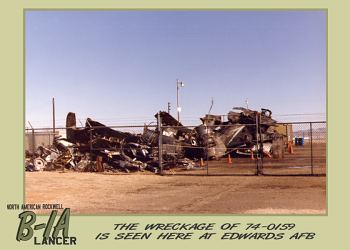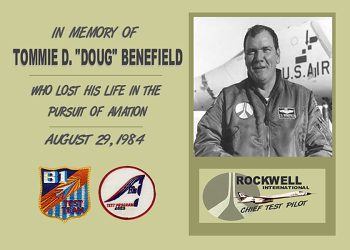
 |
Knowing there was nothing the crew could do to salvage the situation, Maj. Reynolds elected to use the crew escape capsule. Separation occurred satisfactorily 1,500 feet above the ground, but a malfunction of one of the explosive repositioning bolts resulted in the capsule hitting hard in a nose-down attitude. It was the first operational use of the escape system that was only installed on the first three B-1A prototypes. The capsule, with its three parachutes, landed about 200 feet from the main impact point. The wreckage was confined to a relatively small area, about nine miles northeast of Kramer Junction. An inmate fire fighting crew was dispatched from nearby Boron Federal Prison to extinguish several brushfires caused by burning debris. Emergency crews from Edwards AFB soon arrived and sealed off the site.
Major Reynolds and Captain Waniczek were treated for severe injuries, but survived. Rockwell test pilot Benefield died in the capsule from injuries sustained on impact. After the investigation and initial cleanup, the crash site was bulldozed.
 |
